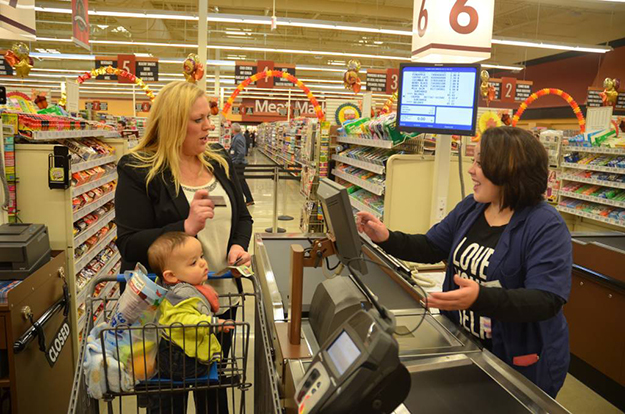Representative Marilyn Strickland (D-WA) co-led and secured language for the Military Family Hunger Prevention Act of 2021 to help service members and their families make ends meet. Begging the question, how many military personnel need help?
"Congress and the Department of Defense need to show that we value service members and their families, like those at Joint Base Lewis-McChord, who sacrifice so much to keep us safe and secure," Strickland wrote in a news release.
For her efforts she received the Food Lifeline's 2021 Legislative Champion Award for her efforts to put an end to military family hunger.
The idea that military families face food insecurity seems unthinkable.
In the most recent report from the Government Accountability Office, more than 22,000 active-duty service members, 213,000 members of the National Guard or Reserves, and 1.1 million veterans used the Supplemental Nutrition Assistance Program, or SNAP, in 2019.
SNAP is the nation's largest nutrition assistance program. It is administered by the U.S. Department of Agriculture (USDA).
Numbers of how many service members are currently using SNAP are unavailable as the USDA does not share data with the Department of Defense.
But the problem is more than just two federal agencies not talking to each other; the problem largely centers on how SNAP counts the military's Basic Allowance for Housing (BAH) when determining eligibility to use SNAP benefits.
BAH is a housing allowance that counts as income when a military member's household applies for nutrition assistance even though it is "actually a non-taxable portion of a service member's pay which allows for equitable housing compensation," a group of military service organizations wrote in a letter to Congress in 2021.
Young and lower ranking service members with families often use their entire allowance and sometimes more for housing, leaving little left over for additional costs like utilities. In turn, this leads into little money left for food.
According to the USDA, SNAP's maximum allotment will increase for the 48 contiguous states, the District of Columbia, Alaska, Hawaii, Guam and the U.S. Virgin Islands in 2022. Increases will vary depending upon the state or territory.
There is a growing problem within the active-duty community of young, enlisted families facing food insecurity. This situation has been complicated by the COVID-19 pandemic and the loss of jobs, thereby creating a greater sense of urgency for these families.
"Instead of having three meals a day, we ate two. Sometimes, we slept until late so we could beat the hunger and eat once a day," an anonymous spouse of a post-9/11 Army veteran wrote on the Military Family Advisory Network site.
According to a survey conducted by Feeding America and reported by the Associated Press in November 2021, approximately 160,000 active-duty service members faced a challenge in feeding their families.
The survey also pointed out that the number is only an estimate; not all families are willing to admit having a food insecurity problem.
"We're the mightiest military on the face of the Earth, and yet those who are on the lower rung of our military ranks are - if they are married and have a child or two - they're hungry," said Senator Tammy Duckworth (D-Ill) in a news release. She is a former Blackhawk pilot who lost both legs in a crash in Iraq.
"How can we focus on carrying out the mission and defending our democracy if you're worried about whether or not your kid gets dinner tonight?"
Much of the food insecurity problem comes not only from the junior enlisted ranks which receive barely minimum wage pay, but also from the frequent moves that do not allow military spouses to find and maintain steady work.
COVID-19 has also played a role as many military spouses have lost their jobs during the pandemic.
"At this stage, there's no excuse for anyone in the top echelons of the Pentagon to say they don't know this is a problem," added Representative James McGovern (D-MA). "It's not rocket science. This is solvable ... somebody take responsibility and solve it."
In early February 2021, CBS News interviewed the spouse of an active-duty soldier at Joint Base Lewis-McChord.
This mother travels to and from a food bank in order to feed her family of six. Her husband is a staff sergeant who earns roughly $3,000 per month.In June of 2021, the Military Family Advisory Network identified JBLM as one of four bases where food insecurity is the worst among military families. The other bases are Fort Bragg, Fort Hood, and Naval Station Norfolk.
"I cannot feed my kids," she began. "I cannot make (the) vehicle payment because I had to feed my kids."
It is unknown at this time if there is even a food pantry at JBLM; however, the Army Emergency Relief Program helps with financial planning and loans for food. According to JBLM's Directorate of Personnel and Family Readiness, as of March 2021 more than $38,000 had been disbursed for food assistance.
"From housing security in high-cost, high-growth areas, to making sure no military family goes hungry - investments in military communities are an investment in our nation's readiness," concluded Strickland.





Read Comments